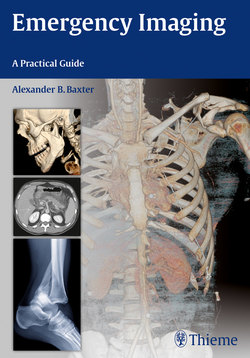Читать книгу Emergency Imaging - Alexander B. Baxter - Страница 49
На сайте Литреса книга снята с продажи.
Оглавление35
2Brain
tiny perforating vessels. These are located at the gray-white junction of the cerebral hemispheres, the basal ganglia, the corpus callosum, or the dorsolateral midbrain. The depth of the hemorrhage roughly corre-lates with trauma severity.
CT can be normal in DAI, and while MRI is more sensitive for detection of micro-hemorrhages, both techniques are likely to underestimate the extent of axonal in-jury. In patients who survive significant head injury, later Wallerian degeneration of sheared axons, brain atrophy, and ven-tricular enlargement reveal neuronal dam-age that is often not apparent on initial CT (Fig. 2.12).
◆Diuse Axonal Injury
Diuse axonal injury (DAI) is the cerebral neuronal damage that occurs when the brain is subjected to severe rotational and translational forces in trauma. Because gray and white matter densities are not identical, dierential movement of the cor-tex relative to white matter during rapid acceleration shears traversing axons and perforating vessels. DAI is a devastating injury, usually the consequence of high-velocity motor vehicle accidents, and the patient typically suers an immediate loss of consciousness and remains in a persis-tentvegetativestate.
On CT imaging, DAI is revealed by small petechial hemorrhages from laceration of
Fig. 2.12a–da–d Diuse axonal injury. Punctate hemorrhages at the gray-white matter junction involving the an-terior corpus callosum, right thalamus, and left posterior limb of internal capsule. Associated traumatic subarachnoid hemorrhage within the interpeduncular cistern and left quadrigeminal plate cistern.
